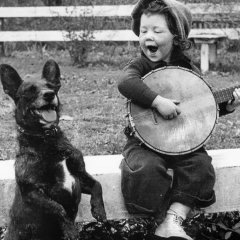-
Content Count
8,417 -
Joined
-
Last visited
-
Days Won
170
Content Type
Profiles
Forums
Calendar
Everything posted by Edge
-
What kind of elk would that be?
-
Here he is holding his sportorized Trapdoor, Buffalo Bill holding a rolling block.
-
Yup more I study it I tend to agree. Funny thing is, I downloaded the pic from an article on Custer and his sportorized M1866 Trapdoor.
-
What if I mentioned it's possibly a Trapdoor?
-
Congrats to the young huntress, outstanding bull!!!
-
Nooooo, almost exactly diagonal across the valley from their. But at least we got a player!
-
But I can't read the fine print under the No Camping.
-
According to one of our members, it was a kiosk welcoming motorists to the Grand Canyon. There was another on the opposite side of the road saying you're Leaving the Grand Canyon which was accidentally demolished in a traffic accident 65 years ago.
-
What does the chain and bracelet weigh?
-

Field & Stream and Outdoor Life Maybe No longer
Edge replied to Outdoor Writer's topic in The Campfire
I'll have to check that out. Whenever my Outdoor Life came, straight to This Happened To Me. https://www.outdoorlife.com/tags/this-happened-to-me/ -
I don't care if there's $5 in your wallet, it's the principal.
-
Breaking news.... No symptoms but shared the stage with Biden two days ago...
-
I went by and met Ron and some of the pups this evening. They have a couple young males. No reds at the moment but always getting them in. Chocolate heeler at bottom was a sweetheart. http://www.azblueheeler.com/shop/
-
And now with mysterious superhuman antibodies, lol.
-
https://www.sanluisobispo.com/news/nation-world/national/article246089990.html Uhmmm, no...F____ NO!!!
-
They were closed I'll try again tomorrow.
-
I'll stop by this afternoon and check. I can't find a website for them but I drive by it all the time.
-
We have a heeler rescue out north of Surprise if you're on the west side, Jomax and 163rd Ave.
-
Hmmm, your theory is sprouting legs...
-
I'd love to see what it looked like 65 years ago.
-
It has a fireplace inside and windows in front and under the sign post


